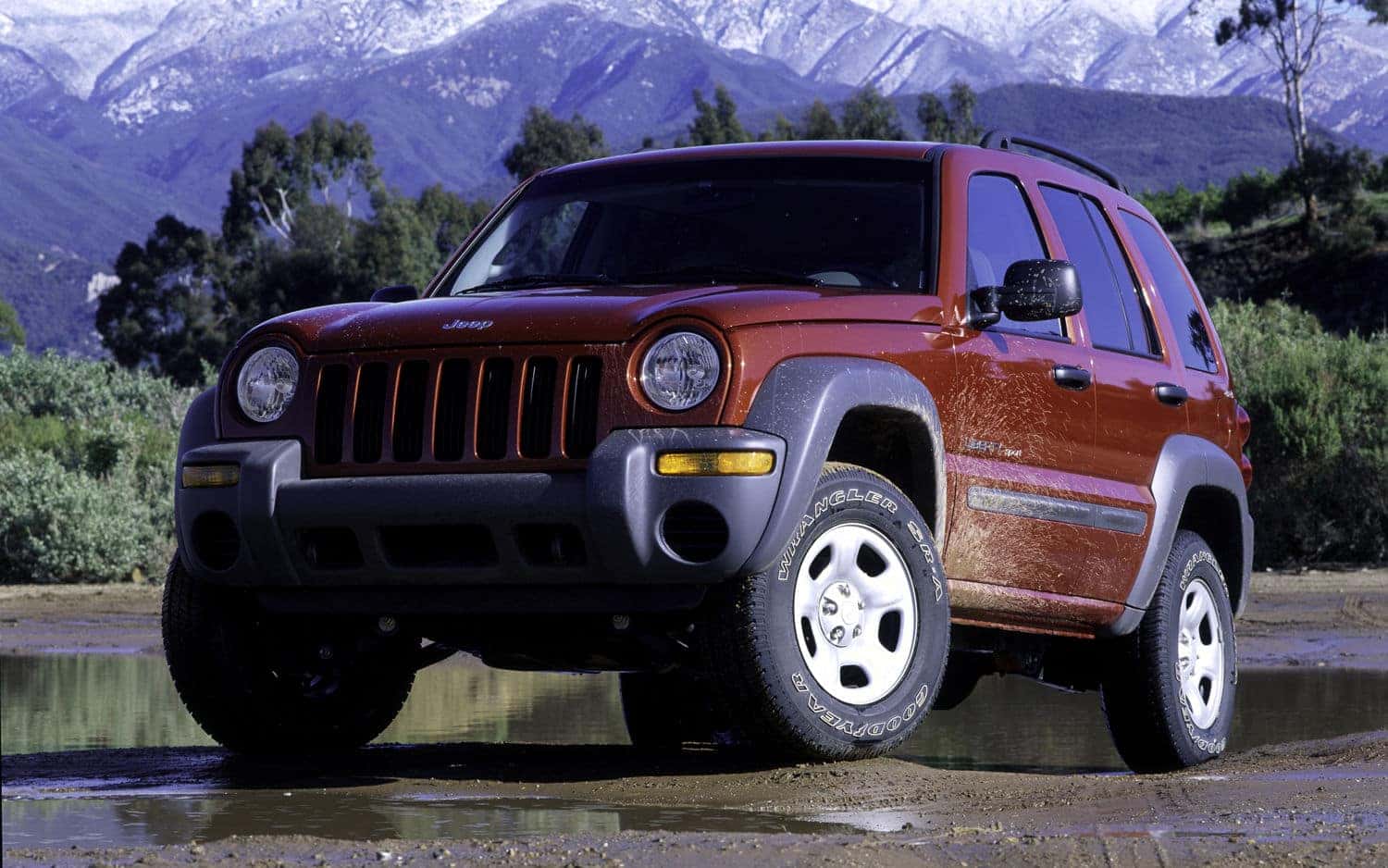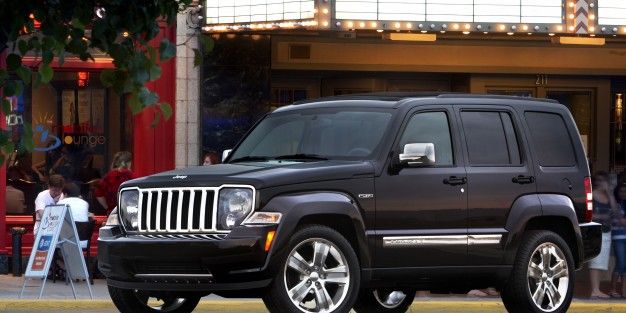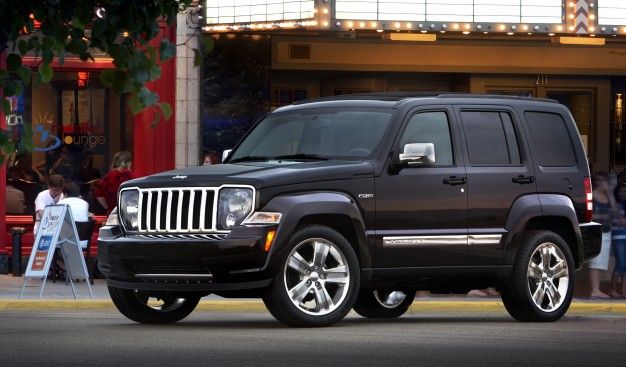Jeep Liberty was discontinued due to declining sales and a shift in consumer preferences towards more fuel-efficient and compact SUVs. After its launch in 2002, the Jeep Liberty quickly gained popularity but faced tough competition from other SUVs, resulting in a decline in sales over the years.
The changing market trends and the need to focus on more efficient and modern models prompted Jeep to discontinue the Liberty to make way for newer and more innovative SUV models. As the brand continues to evolve and adapt to the changing demands in the automotive industry, the discontinuation of the Jeep Liberty reflects the company’s commitment to meeting consumer needs and staying competitive in the market.

Credit: www.kendalldodgechryslerjeepram.com
Factors Leading To Discontinuation
Several factors contributed to the discontinuation of the Jeep Liberty. It was discontinued due to declining sales, outdated design, and a shift in consumer preferences towards more fuel-efficient vehicles. Rising competition in the SUV market also played a role in the decision to discontinue the model.
1. Declining Sales Performance
The Jeep Liberty had been a staple in the SUV market for many years, but its sales began to decline in recent times. There are a few key reasons behind this decline:
Outdated Styling
The design of the Jeep Liberty had remained relatively unchanged over the years, failing to keep up with the evolving tastes and preferences of consumers.
Competition from Rivals
With the introduction of newer and more modern SUV models by competitors, the Jeep Liberty faced fierce competition in the market. Consumers were attracted to the sleeker designs and advanced features offered by these rival vehicles.
Fuel Efficiency Concerns
The Jeep Liberty was known for its powerful engine, but it fell short in terms of fuel efficiency. As fuel prices continued to rise, consumers were increasingly seeking more fuel-efficient options.
Limited Safety Features
While the Jeep Liberty offered some safety features, it lagged behind its competitors in terms of advanced safety technologies. This became a crucial consideration for many consumers when choosing their next SUV.
2. Shift In Consumer Preferences
Another significant factor that led to the discontinuation of the Jeep Liberty was the shift in consumer preferences within the SUV market. Here’s a closer look at the key aspects of this shift:
Rise of Crossover SUVs
With the growing popularity of crossover SUVs, consumers began to gravitate towards vehicles that combined SUV-like capabilities with the comfort and handling of a car. The Jeep Liberty, with its body-on-frame construction, felt less agile in comparison.
Emphasis on Technology
Modern consumers put great importance on technology features in their vehicles. The Jeep Liberty was seen as lacking in this area, with outdated infotainment systems and limited connectivity options.
Urban Lifestyle Preferences
As urban living became more prevalent, consumers began to prioritize vehicles that were suitable for city driving. The Jeep Liberty, with its larger size and less maneuverability, lost favor as urban dwellers sought smaller and more nimble alternatives.
These factors, combined with the decline in overall sales performance, ultimately led to the discontinuation of the Jeep Liberty. Recognizing the changing landscape of the SUV market and evolving consumer preferences, Jeep decided to discontinue the model to focus on newer and more competitive vehicles that meet the demands of today’s consumers.

Credit: www.caranddriver.com
Comparison With Competitors
When it comes to the reasons behind the discontinuation of the Jeep Liberty, it’s essential to consider how it fared in comparison with its competitors. The rapid advancements in technology, design, and features introduced by rival brands played a significant role in shaping the fate of the Jeep Liberty.
1. Advancements In Technology
Jeep Liberty faced tough competition as rival SUVs introduced state-of-the-art technological features, including advanced collision-avoidance systems and innovative infotainment capabilities. These technology-driven upgrades positioned the competitors ahead in terms of safety and connectivity, leaving the Jeep Liberty behind.
2. Design And Features
The design and features offered by the Jeep Liberty, while robust and dependable, started falling short when compared to its rivals. Competing vehicles showcased sleeker and more modern designs, along with enhanced comfort features and upgraded interiors, appealing to a wider range of consumers.
Also Read: How Many Miles Does a Jeep Liberty Last
Impact On Brand And Market Position
Jeep Liberty’s discontinuation had a significant impact on the brand’s market position and perception. Let’s delve into the repercussions in the SUV segment and assess the brand’s image and market position following this decision.
1. Repercussions In The Suv Segment
The discontinuation of the Jeep Liberty had substantial repercussions in the SUV segment. Jeep had carved out a niche for itself with the Liberty, offering a blend of off-road capabilities and on-road comfort. The absence of this model left a void in the market, impacting consumer choices and brand loyalty.
2. Brand Perception And Image
Jeep’s brand perception and image were inevitably affected by the discontinuation of the Liberty. As a brand revered for its ruggedness and versatility, the absence of a mid-size SUV option prompted questions about Jeep’s commitment to serving diverse consumer needs. This move potentially altered the brand’s image and market positioning, requiring strategic efforts to maintain its standing in the industry.
Future Of Jeep Brand
The discontinuation decision of the Jeep Liberty was driven by the changing market demands and the need for the brand to focus on more modern and efficient models with the latest technologies. The future of the Jeep brand lies in creating vehicles that meet the evolving needs of customers while staying true to their rugged and adventurous heritage.
1. Focus On New Models And Innovations
Jeep, a renowned name in the automotive industry, has always been associated with ruggedness and off-road capabilities. The brand’s future lies in its ability to adapt to changing market demands and anticipate customer needs. Jeep understands the importance of introducing new models and embracing innovations to stay competitive in a rapidly evolving industry.
Jeep’s commitment to regularly launching new models is evident from its extensive lineup, which includes popular vehicles like the Wrangler, Grand Cherokee, and Cherokee. These models offer various options to cater to different customer preferences and lifestyles. The introduction of new models allows Jeep to target specific market segments and expand its customer base.
In addition to new models, Jeep also focuses on incorporating innovative technologies and features into its vehicles. This approach ensures that Jeep cars are not only capable off-roaders but also equipped with modern amenities and safety features. By constantly investing in research and development, Jeep strives to set new industry standards and exceed customer expectations.
2. Strategies To Regain Market Share
Regaining market share is crucial for any brand, and Jeep is determined to reclaim its position as a leader in the SUV and off-road vehicle segment. To achieve this, Jeep employs various strategies that encompass both product and marketing initiatives.
Firstly, Jeep recognizes the importance of understanding customer preferences and addressing their unique needs. By conducting thorough market research and studying customer feedback, Jeep can develop vehicles that resonate with its target audience. By focusing on what customers truly want, Jeep aims to create an emotional connection with its buyers.
Secondly, Jeep is proactive in its marketing efforts, utilizing various channels to reach its target audience. From traditional advertising methods to digital marketing, Jeep leverages a diverse range of platforms to promote its products. By adopting an omni-channel marketing approach, Jeep ensures maximum visibility and engagement with potential customers.
Lastly, Jeep understands that customer satisfaction is crucial for long-term success. The brand places a strong emphasis on after-sales service and support, offering comprehensive warranties and maintenance plans. By providing exceptional customer experiences, Jeep aims to build brand loyalty and increase repeat purchases.
Also Read: Why are Jeep Libertys So Cheap
Consumer Response And Reactions
Jeep Liberty was discontinued due to declining sales and outdated design, prompting mixed reactions from consumers. Some expressed disappointment over the beloved model’s departure, while others understood the need for a fresh approach. This decision sparked a flurry of speculation and discussions within the automotive community.
Feedback And Reviews
Consumers were disappointed by the discontinuation of Jeep Liberty.
Expectations From Jeep Moving Forward
Customers hope Jeep will introduce a new, reliable SUV model.

Credit: www.caranddriver.com
Wrapping Up
To sum it up, Jeep Liberty was discontinued primarily due to declining sales, increasing competition, and the need to focus on producing more popular and profitable vehicles. The decision to discontinue the model was based on business considerations and market demand.
As the automotive industry evolves, manufacturers constantly evaluate their product lineup to ensure they meet the changing needs and preferences of consumers. Ultimately, the discontinuation of Jeep Liberty was a strategic move by the company to adapt to the ever-changing market dynamics.
FAQs
Why did Jeep stop making the Liberty?
The Jeep Liberty was discontinued for a combination of reasons, including:
- Declining Sales: Sales numbers for the Liberty dropped significantly in its later years.
- Shift in Market Preference: Consumers were moving towards more fuel-efficient and car-like crossover SUVs, rather than the traditional truck-like style of the Liberty.
- Safety Concerns: Some safety ratings for the Liberty didn’t meet the higher expectations of consumers.
- Jeep Brand Refocus: Jeep likely wanted to streamline its SUV offerings and focus on models like the Cherokee and the Wrangler.
When was the Jeep Liberty discontinued?
The Jeep Liberty was discontinued in 2012.
Was the Jeep Liberty a bad car?
The Jeep Liberty wasn’t necessarily a “bad” car. It had loyal fans who appreciated its rugged off-road capabilities. However, it faced challenges with fuel efficiency, some reliability issues, and evolving consumer preferences.
What replaced the Jeep Liberty?
While not a direct replacement, the Jeep Cherokee re-entered production in 2013, filling a similar niche within the Jeep lineup as a mid-size SUV. The Cherokee offered a more modern, streamlined design and improved fuel efficiency.
Are there still used Jeep Liberty models available?
Yes, you can still find used Jeep Liberty models on the market. If you’re looking for a used SUV with off-road capability and a rugged style, the Liberty might be a good option to consider.
Do Jeep Libertys Last Long?
Jeep Libertys can last long with proper maintenance, lasting an average of 200,000 miles. Regular care can ensure longevity.
What Is The Problem With The 2007 Jeep Liberty?
The 2007 Jeep Liberty has reported issues with its engine performance and reliability, particularly with the 3. 7L V6 engine. It’s also known for transmission problems and electrical issues.

